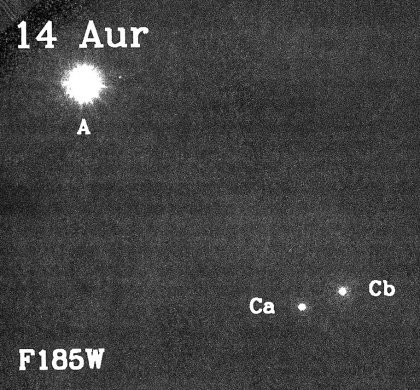
 |
In this ultraviolet Hubble image, 14 Aurigae A hovers near the upper left corner. Near lower right are 14 Aur Ca and Cb, which orbit each other at least every 1600 years, while the C-pair takes a full 20,000 years or more to make it around 14 Aur A. The Cb component, a hot white dwarf, appears to be as bright as the class F dwarf 14 Aur Ca because of its intense ultraviolet radiation. Optically, it would appear much fainter and be difficult to detect. In addition, both A and Ca are close spectroscopic doubles that are not noticeable here, making the system quintuple. At one time, the white dwarf dominated the little group. (The alphanumeric code at lower left denotes the filter used to take the image.) From a paper by M. A. Barstow, H. E. Bond, M. R, Burleigh, and J. B. Holberg in Monthly Notices of the Royal Astronomical Society, vol. 322,. p. 891, 2001. |